Curious to know how our forebears killed fleas? Where George Washington was a church member? You can find out if you tour the Stabler-Leadbeater Apothecary, or Christ Church Episcopal Church, two of the many historic sites in the district.
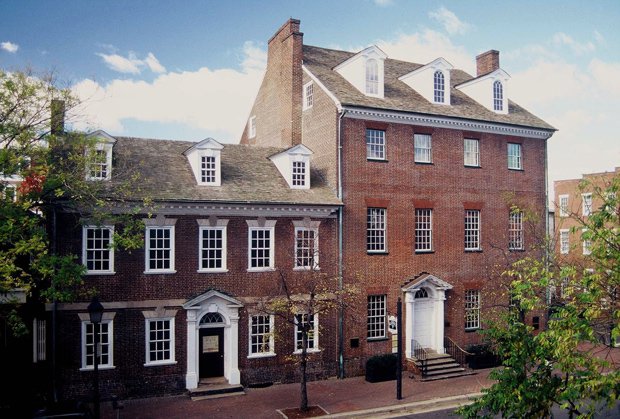
The Old in Old Town
Gadsby’s Tavern Museum
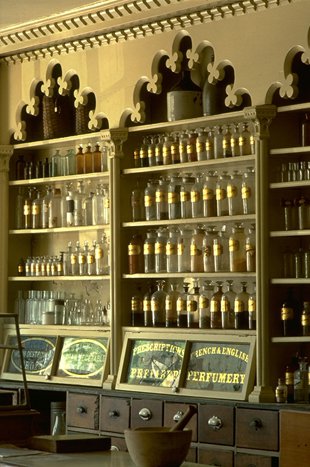
The Stabler-Leadbeater Apothecary Museum
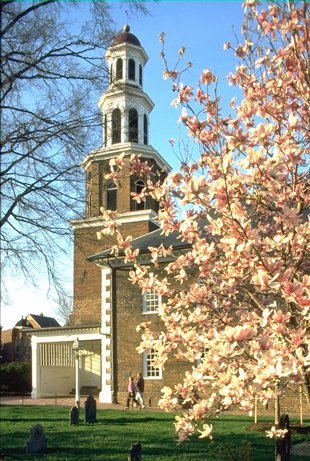
Christ Church, built between 1767 and 1773
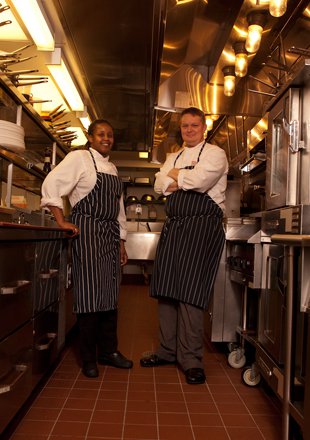
Brabo Chef de Cuisine Chris Watson and Executive Sous Chef Karen Hayes
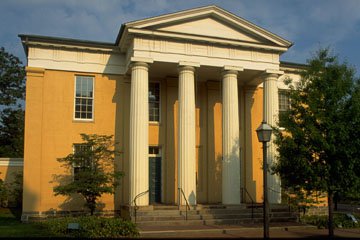
The Lyceum, Alexandria’s history museum
There is a lot going on in Old Town, Alexandria, to be sure—too much to get into a four-page Virginia Living magazine story. I could barely scratch the surface of some of the places and people I encountered while reporting the piece—and of course what I encountered was but a fraction of the total Old Town experience. Those visitors who do not have a sight-seeing plan when they arrive should make the Alexandria Visitors Center their first stop. It is very centrally located at 221 King Street, in the heart of Old Town, in a historic house that once belonged to merchant and city founder William Ramsay—or go to VisitAlexandriaVa.com on the web.
As many know, there are a lot of historical attractions in the district that are worth seeing. One might start with the Lyceum (201 S. Washington Street), which is the city’s history museum and is housed in a lovely 1839 Greek Revival Building. It’s got a wide variety of artifacts about the history of the city. Other top-of-list sites include Gadsby’s Tavern Museum—an 18th century tavern and hotel where George Washington, Thomas Jefferson and many other notables hung their hats for a night or more (eating, drinking, sleeping); Alexandria Black History Museum (902 Wythe St.); Carlyle House, a Georgian Palladian mansion built in 1753 by Scottish merchant and city founder John Carlyle, and Christ Church—a beautiful church built between 1767 and 1773. Robert E. Lee and George Washington were members of its Episcopal congregation.
The Stabler-Leadbeater Apothecary Museum, on S. Fairfax St, is definitely worth a visit. It was a family medical business that was in operation from 1792 until 1933. The place essentially offers a history of medicine, especially in the 19th century. Everything inside—bottles, labels, pills, roots and more—dates back to at least 1933, when the business was closed, and most of the ingredients and home remedies are much older. There are bottles of ether, chloroform, opium, morphine and cannabis, all with original labels—the latter two were legal for a long time. You can see the instruments for bloodletting, and you learn that Queen Anne’s Lace was once used as a contraceptive, and that Mount Vernon once produced a “triple extract perfume.” There is a bottle of Excel Pain Exceler—“not over 50 percent alcohol.” If it contained, say, 40 percent alcohol, or even half that, we might get some insight into the nature of that particular “cure.”
On the second floor, where the apothecary’s wholesale operation was located, there are scores of boxes of roots—which were used as a key ingredient in all kinds of medicines—unicorn root, snake root, many more. There is an April 22, 1802 letter from Martha Washington to druggist Edward Stabler requesting “a quart bottle of your best castor oil.” She died several weeks later. And you can learn how people killed fleas back in the day—with tanglefoot, which is apparently a tree gum, very sticky, and still used as a repellent today. According to an advertisement for tanglefoot for fleas, “Place a piece of fresh meat or liver in the center of the sheet of tanglefoot and place it under the bed at night. The fleas jump for the meat and are caught on the paper.” Ah, the good ole days.
Robert Wiedmaier, a well-known chef in the D.C. metro area, remembers his own good ‘ole days in Old Town. In 1986, when he was 24, Wiedmaier worked for two years at the erstwhile restaurant Le Chardon D’Or at the Morrison House in Old Town. It was one of his first cooking jobs. “It was fine dining, cutting edge, only had 30 seats,” he recalls, adding: “It was a very special place at that time.”
These days, Wiedmaier owns Marcel’s and Brasserie Beck in D.C., and he is the manager of Brabo, which is a couple of years old and located on the high end of King Street—away from the areas close to the waterfront where most of Old Town tourists can be found. Wiedmaier is not often at Brabo—maybe two or three times a month, he says—but he creates the menu (“a mediterrean mix of French with Flemish flair”) and meets with all his chefs, including Brabo chef Dennis Watson, every Friday. He says that Brabo is not as formal as Marcel’s but also not as casual as Brasserie Beck. “I try to keep the average check between $45 and $65…and think we achieve that pretty well.”
Wiedmaier, who was born in Germany to a Belgian father and American mother, says that when it was decided to open Brabo on the high side of King Street, near the Metro station, “I was worried about being on the wrong side. But we are actually on the right side.” The location is in a more residential, less touristy area, which he argues has been good for the restaurant, because most of the residents “want to go down near the water.” The restaurateur is pleased by at least one other thing: He says that northern Virginia customers “like to drink more” than customers in D.C.—a good thing for business since liquor markups are usually high. “It seems like we have better beverage sales in Old Town than in D.C.—and we have more of a community than in D.C. There are people who have lived in Old Town for a long time.” He himself likes Burgundy wine, but says that “at Brabo we do a little bit of everything—we have a nice wine list, with nice variety. The pinot grape goes so well with food.”
When Wiedmaier was young, 24 or 25, one of his first restaurant jobs was working at The Golden Thistle restaurant at the Morrison House in Old Town. “It was fine dining, cutting edge, only had 30 seats. It was a very special place at that time.” The chef says Old Town “has kept its original feel—except for the Lorien [complex], it’s the same buildings. They are all the same. You’ve got some more sophisticated restaurants, but I don’t think it’s changed much—which is nice.”
The recession has not been good for eateries, that’s for sure. Wiedmaier describes 2009-2010 as “one of the worst years I’ve seen in my lifetime. But I have to knock on wood because all my restaurants did well—we survived, and with a lot of competition.” The lesson, he says, is that “if you are mediocre you will die. People will make a conscious choice to look for great food, great service and great value for their money.” He’s pleased, he adds, “that the whole D. C. metro area has come out of this smelling like a rose.”








